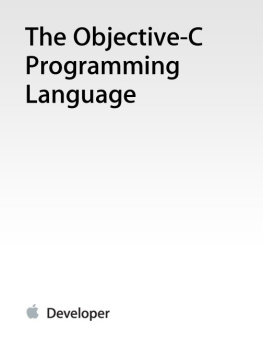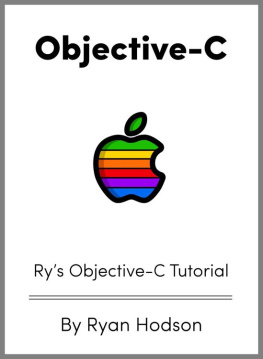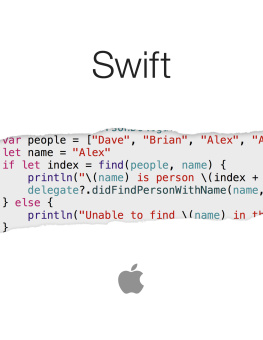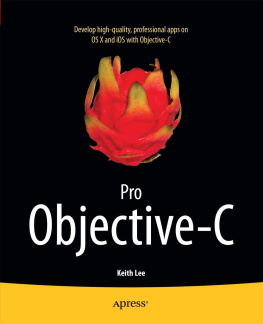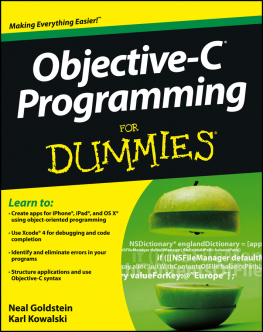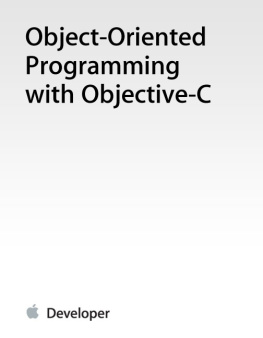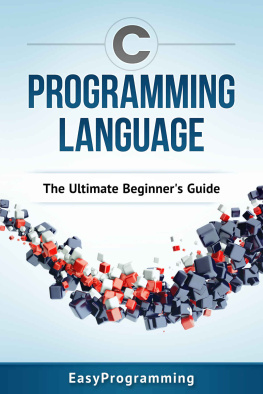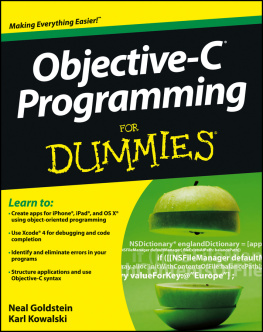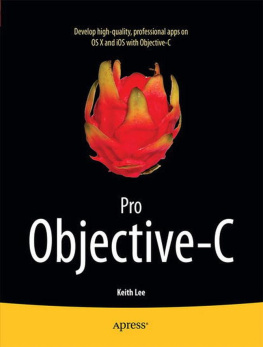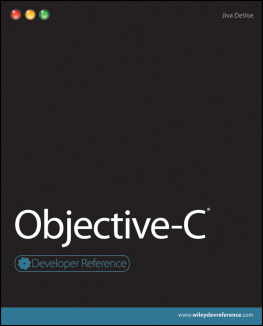coll. - The Objective-C Programming Language
Here you can read online coll. - The Objective-C Programming Language full text of the book (entire story) in english for free. Download pdf and epub, get meaning, cover and reviews about this ebook. year: 2010, publisher: Apple, genre: Computer. Description of the work, (preface) as well as reviews are available. Best literature library LitArk.com created for fans of good reading and offers a wide selection of genres:
Romance novel
Science fiction
Adventure
Detective
Science
History
Home and family
Prose
Art
Politics
Computer
Non-fiction
Religion
Business
Children
Humor
Choose a favorite category and find really read worthwhile books. Enjoy immersion in the world of imagination, feel the emotions of the characters or learn something new for yourself, make an fascinating discovery.
The Objective-C Programming Language: summary, description and annotation
We offer to read an annotation, description, summary or preface (depends on what the author of the book "The Objective-C Programming Language" wrote himself). If you haven't found the necessary information about the book — write in the comments, we will try to find it.
The Objective-C Programming Language — read online for free the complete book (whole text) full work
Below is the text of the book, divided by pages. System saving the place of the last page read, allows you to conveniently read the book "The Objective-C Programming Language" online for free, without having to search again every time where you left off. Put a bookmark, and you can go to the page where you finished reading at any time.
Font size:
Interval:
Bookmark:
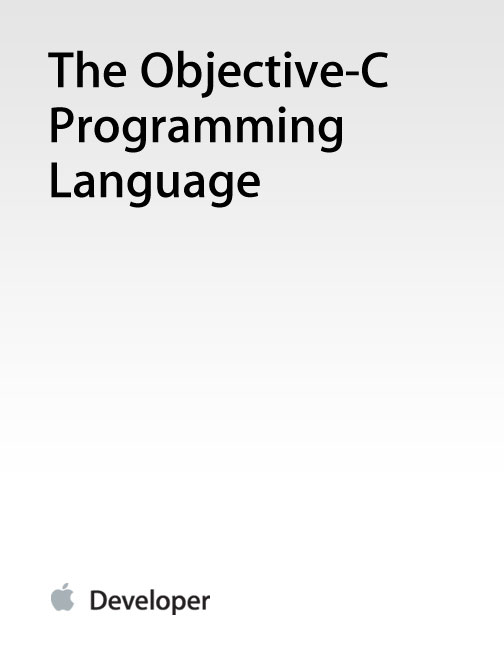
Language
The Objective-C language is a simple computer language designed to enable sophisticated object-oriented programming. Objective-C is defined as a small but powerful set of extensions to the standard ANSI C language. Its additions to C are mostly based on Smalltalk, one of the first object-oriented programming languages. Objective-C is designed to give C full object-oriented programming capabilities, and to do so in a simple and straightforward way.
Most object-oriented development environments consist of several parts:
An object-oriented programming language
A library of objects
A suite of development tools
A runtime environment
This document is about the first component of the development environmentthe programming language. It fully describes the version of the Objective-C language released in Mac OS X v10.6 and iOS 4.0. This document also provides a foundation for learning about the second component, the Objective-C application frameworks collectively known as Cocoa . The runtime environment is described in a separate document, Objective-C Runtime Programming Guide .
The document is intended for readers who might be interested in:
Programming in Objective-C
Finding out about the basis for the Cocoa application frameworks
This document both introduces the object-oriented model that Objective-C is based upon and fully documents the language. It concentrates on the Objective-C extensions to C, not on the C language itself.
Because this isnt a document about C, it assumes some prior acquaintance with that language. Object-oriented programming in Objective-C is, however, sufficiently different from procedural programming in ANSI C that you wont be hampered if youre not an experienced C programmer.
The following chapters cover all the features Objective-C adds to standard C.
A glossary at the end of this document provides definitions of terms specific to Objective-C and object-oriented programming.
This document makes special use of computer voice and italic fonts. Computer voice denotes words or characters that are to be taken literally (typed as they appear). Italic denotes words that represent something else or can be varied. For example, the syntax:
@interface ClassName ( CategoryName )
means that @interface and the two parentheses are required, but that you can choose the class name and category name.
Where example code is shown, ellipsis points indicates the parts, often substantial parts, that have been omitted:
| - (void)encodeWithCoder:(NSCoder *)coder |
| { |
| [super encodeWithCoder:coder]; |
| ... |
| } |
If you have never used object-oriented programming to create applications, you should read Object-Oriented Programming with Objective-C . You should also consider reading it if you have used other object-oriented development environments such as C++ and Java because they have many expectations and conventions different from those of Objective-C. Object-Oriented Programming with Objective-C is designed to help you become familiar with object-oriented development from the perspective of an Objective-C developer. It spells out some of the implications of object-oriented design and gives you a flavor of what writing an object-oriented program is really like.
Objective-C Runtime Programming Guide describes aspects of the Objective-C runtime and how you can use it.
Objective-C Runtime Reference describes the data structures and functions of the Objective-C runtime support library. Your programs can use these interfaces to interact with the Objective-C runtime system. For example, you can add classes or methods, or obtain a list of all class definitions for loaded classes.
Objective-C supports two mechanisms for memory management: automatic garbage collection and reference counting:
Garbage Collection Programming Guide describes the garbage collection system used in Mac OS X. (Not available for iOSyou cannot access this document through the iOS Dev Center.)
Memory Management Programming Guide describes the reference counting system used in iOS and Mac OS X.
This chapter describes the fundamentals of objects, classes, and messaging as used and implemented by the Objective-C language. It also introduces the Objective-C runtime.
Font size:
Interval:
Bookmark:
Similar books «The Objective-C Programming Language»
Look at similar books to The Objective-C Programming Language. We have selected literature similar in name and meaning in the hope of providing readers with more options to find new, interesting, not yet read works.
Discussion, reviews of the book The Objective-C Programming Language and just readers' own opinions. Leave your comments, write what you think about the work, its meaning or the main characters. Specify what exactly you liked and what you didn't like, and why you think so.

